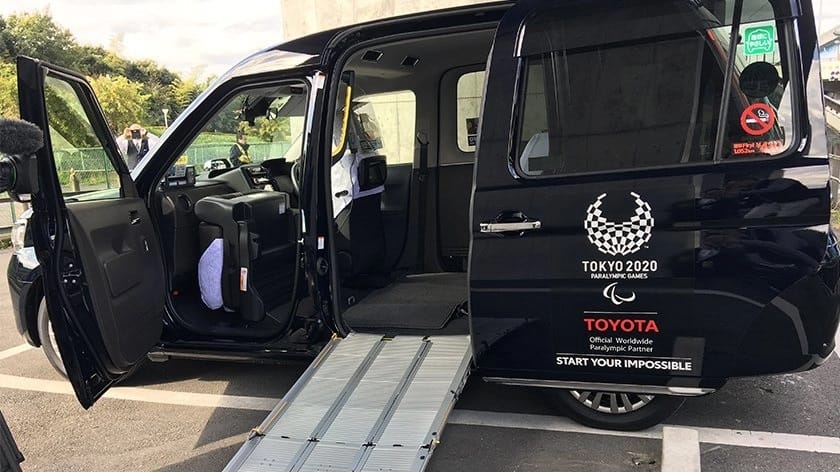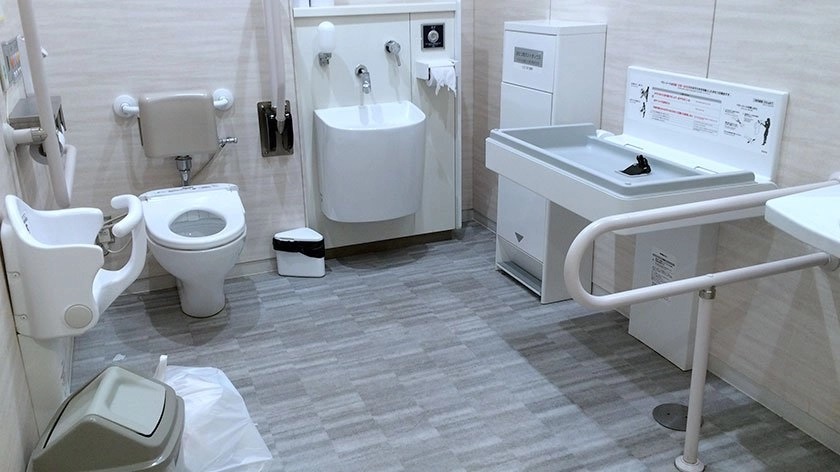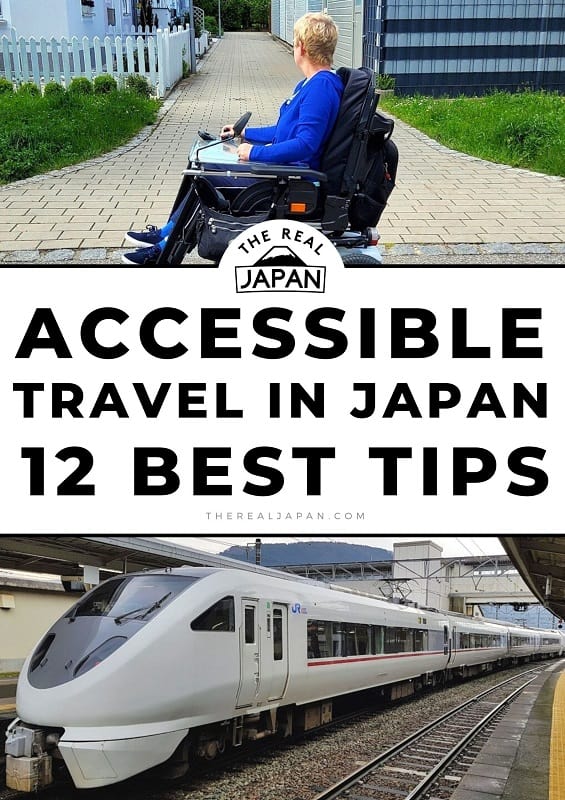Japan has so much to see and explore, but often those living with disabilities believe it is completely inaccessible to them.
A few decades ago, this may have been the case, but accessibility has come a long way and surpassed other counties in some areas.
Japan has made huge strides in making more places accessible than ever before, but there are still things to watch out for.
In this special guest post we'll provide you with 12 of the very best tips for accessible travel in Japan.
It's written by someone who has experienced and learned first hand what you're likely to encounter, how you can be prepared in advance, and how to overcome potential obstacles.
12 Best Tips for Accessible Travel in Japan
by Justin Schroth
1. Plan Ahead
Research locations in advance for hotel accessibility as well as sightseeing. Speciliast site Accessible Japan has many locations throughout Japan that have been reviewed for accessibility, nevertheless there may be other sightseeing locations you want to visit. Websites for specific locations may have maps available but often are limited on accessibility information.
Google maps, street views, and visitor photos/videos are excellent resources that can act as a virtual tour of the area, giving you an idea of the location’s challenges. Likewise, hotels may have limited accessibility information, at minimum you may be lucky if you just have a floor plan layout as the only thing to consider is its accessibility.
Hotels that do offer accessible rooms may vary, so contact your hotel and ask about specific features of the room that are important to you. Plan ahead so there’s fewer surprises to worry about during your trip.
SEE ALSO: 10 Top Rated Virtual Japan Tours
2. Using a Wheelchair
If you have the option of bringing a manual wheelchair or a motorized one, consider taking the more compact chair. A smaller manual wheelchair is more likely to fit in the many small shops and sightseeing locations as well as easier to ascend a step or two with some help.

Motorized wheelchairs can get around Japan well, but a smaller, manual one will fit into Japan's many smaller spots
A motorized wheelchair can get around Japan well, many modern department stores are very accessible, however you may find that you can only shop in smaller stores via the front window.
A warning though, the use of scooters may want to be avoided as some train lines don’t allow users to ride them during transit, making it problematic for some to travel around without transferring to a seat.
For a perspective on a first visit to Japan as a wheelchair user read this post: Accessible Japan Sightseeing Tips (How We Honeymooned in Japan).
3. Getting Around
Trains
Use and enjoy! The mass-transit train system throughout most of Japan is very accessible, and if you use a wheelchair then it may even be less daunting then you think.
At most stations an attendant will ask where you are going, escort you to your train, place a small ramp into the train for you, and even call ahead to your destination so a similar attendant and ramp will be waiting. Keep in mind that wheelchair accessible seating specifically on bullet trains is limited, so you may need to book them in advance.
Trains are a very convenient way to get around much of Japan, especially with a Rail Pass (see below).
Buses
Buses are an option for accessible travel in Japan in parts of larger cities. Many of the city buses in large urban areas are wheelchair accessible and have priority seating for wheelchairs, however, some routes are still not fully accessible in more rural areas.
If a wheelchair user wishes to get on a bus, make sure to get the driver's attention when they arrive, because the driver will use the bus lift to put them on prior to everyone else. This accessibility doesn’t extend to most highway buses and airport shuttle buses, so plan other transit in these areas if you have no means of transferring yourself.
Taxis
For motorized wheelchair users, booking an accessible taxi well in advance may be your only option. Those with manual wheelchairs (or smaller motorized wheelchairs) can try out the newer Japan taxis which are modelled after London’s famous black cabs.

Newer taxis in Japan, modelled after London’s black cabs, can carry a wheelchair user and a companion | Photo: Accessible Japan
A wheelchair user and one companion can usually fit. If you use a collapsible wheelchair, it may not fit in the limited trunk space of a regular taxi if you also have luggage to stow away. They can also be very expensive.
On Foot / Wheels
For wheelchair users if you have the option, such as from family members or caregiver assistance, be ready to overcome a step or two at various locations if you want to see more. See the next few sections for more info.
4. Streets and Walkways
Be cautious and patient in rural areas or small streets. On smaller streets and rural areas there are often no sidewalks, pedestrians share the road with cars.
Sightseeing locations may have gravel walkways in rural areas, at temples, or parks, usually they are compacted but it can be rough riding for small wheelchair tires. In major cities there has been a lot of effort to build walkways with slopes in most areas and you will likely not encounter much of a hassle.
5. Shopping
Try shopping around an area, not just a specific store. Traditionally many stores separate their entry from the outside with a step or two in the foyer, if you can manage getting over it (of you are lucky they may have a ramp they can place down) then many additional medium and larger places can be accessed.
Yet with the limited space in Japan comes small stores that will simply be inaccessible without walking. If you find yourself stuck window shopping, there is a chance that a store owner would happily bring something out for you to see up close if asked. The Japanese service industry can be amazing in this way.
6. Restaurants
If you cannot use chopsticks, it’s recommended that you bring your own utensils, more traditional restaurants may not have any available. Like stores, restaurants may have an entry step or two unless they are in a more modern big building, meaning you will probably see this challenge more so the farther away you are from a big city.
Restaurants can also have fixed seating (booths, bolted down bar stools, etc.) and no room for a wheelchair, you may not want to be dead set on going to a specific restaurant without researching it first. No matter where you are though, if you’re hungry chances are you’ll find an accessible place where you can eat delicious food.
RECOMMENDED: 15 Must Try Japanese Foods
7. The Japan Rail Pass
If you plan to do a lot of traveling in Japan, especially long distance, then consider saving some money by getting a Japan Rail Pass (note: wheelchair users should not buy the Green Pass as not all Green Car carriages are not accessible).
With a quick check of a JR Pass (and none of the hassle of buying a ticket), this pass allows a foreign visitor unlimited use of JR trains (including many bullet trains) for one, two, or three weeks for a flat price. A Japan Rail Pass can make accessible travel in Japan a worry-free pleasure.

JR West train at Kinosaki Onsen, covered by the excellent Japan Rail Pass
The pass also includes some JR buses and other transports, but not every train, highway buses, metro, or any taxi so check its usage area and compare it to the locations you wish to visit. Note that the pass is cheapest when bought from your home country before your trip.
Full details on the scope of the Japan Rail Pass, wherer to buy, and how it works can be found in our extensive post Japan Rail Pass: The Ultimate Guide.
SEE ALSO: Japan Rail Pass: The Ultimate Guide
8. Toilets
Consider a stop at a station if nature calls. Very useful multipurpose toilet rooms are available in most of the train or subway stations throughout Japan. They may be more uncommon in rural areas but if you’re near a tourist attraction, public building, department store, larger supermarket, or some parks there may be one available.

Multipurpose toilet rooms are available throughout Japan | Photo: Accessible Japan
There is even one on the bullet train! These toilets are big enough to allow for a wheelchair user and a few caregivers if necessary. They are typically equipped with many assistive fixtures such as grab bars, changing tables, accessible sinks, emergency buttons, and more.
SEE ALSO: Accessible Japan Sightseeing Tips (How We Honeymooned in Japan)
9. Prepare a Cheat Sheet for Your Needs
Knowing Japanese isn’t necessarily a requirement when visiting Japan, but in some cases at least having something important written down can be very useful. If you find yourself in need of explaining your disability or making sure to communicate a food allergy at a restaurant, you should make a cheat sheet.
On this sheet you should have a brief explanation of what you may want to convey in both English and Japanese that way you can quickly point and show your concern to the person you are talking with. Accessible Japan has a section with many such phrases that will help.
SEE ALSO: How To Travel In Japan (When You Don't Speak Japanese)
10. Bringing a Guide Dog
If you plan on bringing your guide dog, there’s an extensive process necessary to do so. We recommend starting this process early to ensure your pup will be in quarantine for the minimal required time.

If bringing a guide dog, plan well ahead to ensure the minimum quarantine for your companion
Check the Ministry of Health, Labour and Welfare’s “Assistance Dogs for Persons with Physical Disabilities” for details (here: https://www.mhlw.go.jp/english/policy/care-welfare/welfare-disabilities/assistance_dogs/index.html).
11. Bringing Medicine to Japan
Check to make sure that your medications (both over-the-counter and prescription) are allowed in Japan, even some common medications may not be allowed or only in quantities equal to the duration of your stay.
It’s strongly recommended that you visit Japan's Ministry of Health, Labour and Welfare’s website and contact them via email to confirm that your medications are allowed in Japan (here: https://www.mhlw.go.jp/english/policy/health-medical/pharmaceuticals/01.html).
SEE ALSO: Drugs, Medicine and Feeling Ill in Japan
12. Don’t Get Discouraged
If you find a particular restaurant or shop you want to see is inaccessible, don’t get discouraged. We recommend looking around at other local stores, as you may find another accessible shop selling similar goods, or a restaurant nearby selling local food that is just as delicious.
Sometimes it pays to wander, just don’t get lost.
That brings us to the end of this list on accessible travel in Japan.
While we covered the most important parts here, we encourage anyone interested in visiting Japan to reach out and ask us if you have a particular question or concern when travelling with a disability.
You can ask your questions on the Accessible Japan forum or the accessible travel community, TabiFolk, where we are very active. Or comment below and let us know.

About the Author
Justin Schroth lives with Muscular Dystrophy, but he doesn’t let it dampen his passion. He is a writer at Accessible Japan. He holds a Bachelor of Science Degree in Exceptional Student Education from Daytona State College. Justin is currently striving toward his goal of working and living in Japan independently.
Resources
Further Reading
Accessible Japan Sightseeing Tips (How We Honeymooned in Japan)
Accessible Japan website
https://www.accessible-japan.com/
Accessible Japan Essential Japanese Phrases
Essential Japanese Phrases and Words for People with Disabilities
Japan Ministry of Health, Labour and Welfare
Assistance Dogs for Persons with Physical Disabilities
Information for those who are bringing medicines for personal use into Japan
More Planning Resources
My List of Recommended Japan Travel Resources
Recommended Japan Travel Resources
Travel Planning Services & Japan Travel Guides
If you enjoyed this article please share this image online:




Here in Yamagata, we’ve reccently aquired new snow-capable wheelchairs to use for the snow. The snow monsters of mount Zao are a major attraction and it’s innovation like this that makes them accessible to everyone!
Wow – that is impressive! Thanks for sharing.